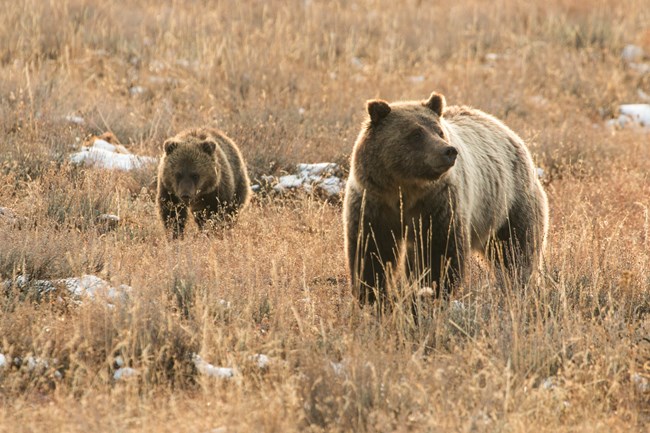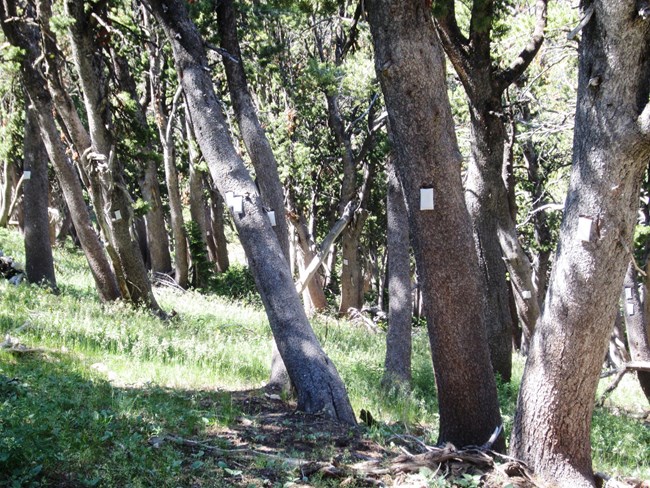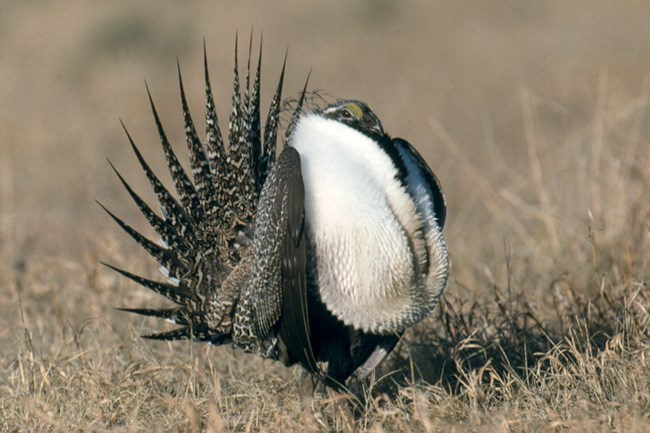
Threatened SpeciesA number of species listed as "threatened" on the Endangered Species Act live in Grand Teton National Park. The best known of those species is the grizzly bear (Ursos arctos). Nearly eliminated from the ecosystem due to hunting and eradication programs, intensive conservation efforts over the last 40 years allowed grizzly bears to make a remarkable recovery. Today, an estimated 800 grizzly bears live in the Greater Yellowstone Ecosystem. 
GRTE/Bemis Candidate for ListingWhitebark pine trees produce nuts rich in fat and protein, These nuts are a significant source of nutrition for grizzly bears during hyperphagia - the intensive feeding that bears go through prior to hibernation. Two main risks to these sentinels of the high country are mountain pine beetles, a native species, and blister rust, an invasive disease. Verbenone packets, the white packets in the picture, are attached to pine trees to trick mountain pine beetles into infesting another tree. 
GRTE/Stratton Species of ConcernIn addition to the threatened species and candidate species, there are also species of concern. Popular, iconic species such as bald eagles, gray wolves, and greater sage grouse are closely monitored every year to track their populations.Bald eagles (Haliaeetus leucocephalus) thrive along the Snake and Gros Ventre rivers. They feed primarily on fish, but also feed on small mammals, waterfowl, and carrion. Once considered an endangered species, these majestic birds have experienced a dramatic recovery. In 2018, thirteen pairs nested and fledged 13 eaglets. Look for these birds soaring over the water in the park. Gray wolves (Canis lupus) introduced into Yellowstone in 1995 expanded their territories south into Grand Teton National Park by 1999. In 2018, a minimum of 32 wolves in 4 packs resided in Jackson Hole and the Teton Range. The species has been on and off the endangered species list, but is currently de-listed. Look for the largest member of the dog family to form packs. Unlikely coyotes, wolves may range to white to black and usually in groups. Greater sage grouse (Centrocercus urophasianus) historically occurred in sagebrush habitats across the American West. Populations have declined dramatically throughout the range over the past 50 years. Sage grouse are best known for their mating displays that they perform each spring in areas called leks. These birds will return to the same leks for generations, and put on quite a display. Look for them at dawn in the early spring performing their dances in open spaces within the sagebrush. |
Last updated: April 29, 2020
